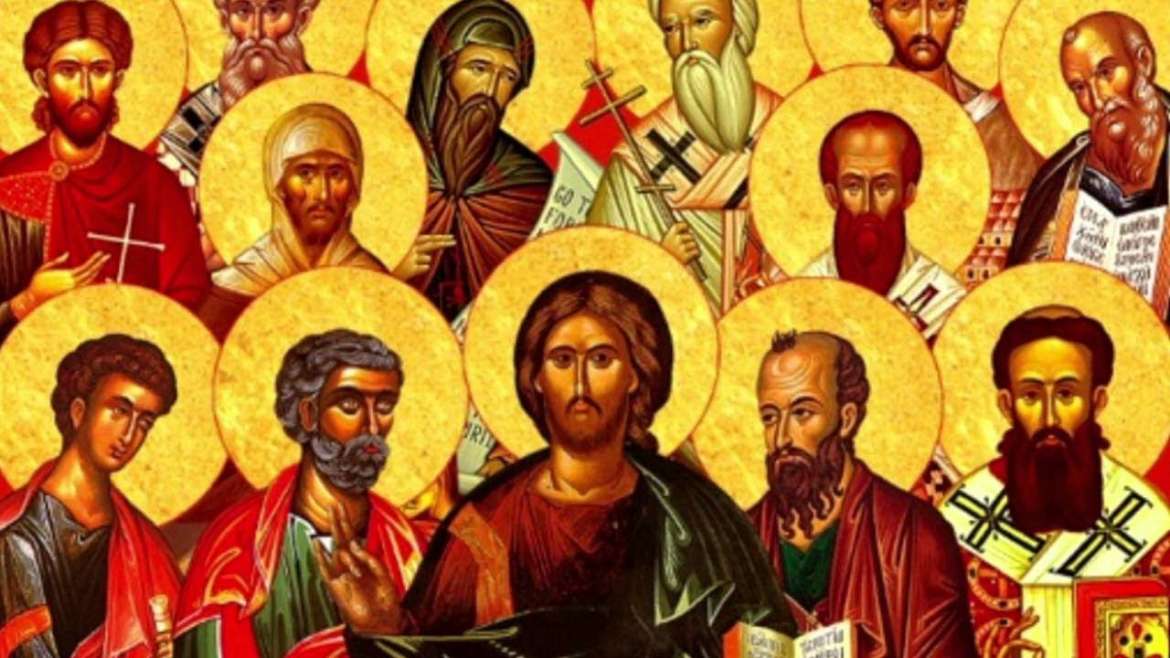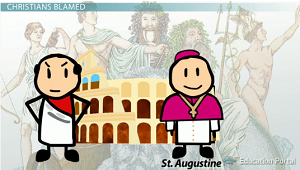Early Church Fathers
Definition of Terms
Today’s lesson will discuss the Apostle Paul and the 12 disciples of Jesus Christ, known to history as the early Church Fathers. In doing this, we’ll be relying heavily on the Christian Bible. We’ll specifically be using the Gospels, or the first four books of the New Testament, as they are the main source on the earthly life of Jesus Christ. We’ll also cite the book of Acts, the New Testament book that recounts the very first years after the death of Christ.
With our sourcing down, let’s get going. We’ll start with the 12 disciples. First of all, when using the word disciple, we mean a follower of Jesus Christ. However, when we say apostle, we’ll mean someone who was sent out to share the message of Christ. Despite the difference in actual meaning, the two words are often used interchangeably.
Early Church Fathers Twelve Disciples
As for the original 12 disciples of Christ, their names were Andrew, Bartholomew, Philip, Thaddeus, Simon, Thomas, Judas, Matthew, John, Peter, and two guys named James. To make things easier, we’ll just remember them as the guys who traveled with and followed Jesus. They came from all different walks of life and social strata. For instance, there was Matthew, the tax collector, and there was Peter, the fisherman. There was Simon, the revolutionary, and Thaddeus, the guy history knows very little about.
Despite these differences, these 12 men were bound together by one thing: they believed that Jesus Christ was the Messiah! Even though the powerful Jewish rulers of the day had branded Him a liar and eventually had Him crucified for this claim, the disciples believed Him. As the Apostle Peter said to Him, ‘You are the Christ, the Son of the living God.’
Persecution
After the crucifixion of Christ, these men, except for Judas, who betrayed Jesus by helping to hand Him over to the Jewish rulers, continued to preach the message of Jesus Christ. In fact, the Bible tells us that at the Day of Pentecost, in which the Holy Spirit of God descended on the followers of Jesus Christ, they began preaching openly to anyone who would listen. Even Thomas, the guy we get the term ‘Doubting Thomas’ from because he refused to believe Jesus had risen from the dead until He actually appeared to him, couldn’t be silenced.
Of course, this really rattled the Jewish leaders who thought they had taken care of the Jesus problem by crucifying Him! Now His followers were boldly going around preaching that He was God, and that He was raised from the dead. Making matters worse, they were gathering a serious following by doing things like healing the sick, casting out demons, and many other miracles!
Fearing that things were getting really out of control, the Jewish rulers of the day began persecuting the disciples. Within a very few short years, the Roman Empire also began persecuting them for their refusal to acknowledge the emperor as God. They were arrested, beaten, and even martyred, or executed for their beliefs. In fact, church tradition holds that within a few decades of Jesus’s death, all of the 12 disciples, save John, had been put to death.
Paul’s Conversion
Ironically, one of the Jewish rulers who led the charge toward their deaths was none other than a man named Saul, known to history by his Roman name, ‘Paul,’ and to the Christian Church as the ‘Apostle Paul.’ With this twist of events, I’m thinking I’ll definitely need to back up and explain!
Before the Apostle Paul became a believer in Jesus Christ, he went by the Jewish name Saul. As Saul, he was a member of the Jewish rulers known as the Pharisees. Not only was he a member, he was one of the guys who zealously persecuted the followers of Christ. In fact, the Bible records that he went to the highest Jewish officials and asked permission to travel to Damascus in modern-day Syria. His goal was to round up as many of the Jesus following troublemakers as he could. His plan was to bring them all back to Jerusalem where they’d face punishment!
However, on this trip, something rather unexpected happened. For this part, we’ll let the book of Acts tell the story:
‘As he was approaching Damascus on this mission, a light from heaven suddenly shone down around him. He fell to the ground and heard a voice saying to him, ‘Saul! Saul! Why are you persecuting me?’
‘Who are you, Lord?’ Saul asked. And the voice replied, ‘I am Jesus, the one you are persecuting! Now get up and go into the city, and you will be told what you must do.’
The men with Saul stood speechless, for they heard the sound of someone’s voice but saw no one! Saul picked himself up off the ground, but when he opened his eyes, he was blind. So, his companions led him by the hand to Damascus. He remained there, blind, for three days and did not eat or drink.
Now there was a believer in Damascus named Ananias. The Lord spoke to him in a vision, calling, ‘Ananias!’ ‘Yes, Lord!’ he replied. The Lord said, ‘Go over to Straight Street, to the house of Judas. When you get there, ask for a man from Tarsus named Saul. He is praying to me right now. I have shown him a vision of a man named Ananias coming in and laying hands on him so he can see again.’
‘But Lord,’ exclaimed Ananias, ‘I’ve heard many people talk about the terrible things this man has done to the believers in Jerusalem! And he is authorized by the leading priests to arrest everyone who calls upon your name.’
But the Lord said, ‘Go, for Saul is my chosen instrument to take my message to the Gentiles and to kings, as well as to the people of Israel. And I will show him how much he must suffer for my name’s sake.’
So Ananias went and found Saul. He laid his hands on him and said, ‘Brother Saul, the Lord Jesus, who appeared to you on the road, has sent me so that you might regain your sight and be filled with the Holy Spirit.’ Instantly, something like scales fell from Saul’s eyes, and he regained his sight. Then he got up and was baptized.’ (Acts 9:3-18)
After Conversion
And the rest of the story is what we call history! As most Sunday school goers can tell you, Saul, or Paul as he’s best known by, became a fervent Apostle of Jesus Christ. In fact, he is credited with writing close to half the books in the Christian New Testament Bible, as well as founding many Christian churches throughout Asia Minor.
For these deeds, the man who was once a zealous persecutor of the Christian Church became the persecuted! Again, Christian tradition teaches that the Apostle Paul was martyred sometime around the year 64 CE under the reign of Emperor Nero.
Despite Paul’s execution and the execution of the other disciples, Christianity only thrived and flourished, becoming one of the largest faith systems in our modern world. As I heard a professor once comment, ‘The leaders of Rome did their best to squelch Christianity, but quite ironically, we now name our dogs Nero and our sons Paul!’
Lesson Summary of Early Church Fathers
According to the Gospels, or the first four books of the New Testament Bible, Jesus had 12 original disciples, or followers. These were men from all different walks of life who traveled with Jesus. Some of the most well-known are Peter, John, Thomas, and Judas, the one who would eventually betray Jesus.
After the death and resurrection of Jesus, these men were filled with the Holy Spirit of God on the Day of Pentecost. The book of Acts, which recounts the workings of the disciples following Christ’s death, tell us the remaining disciples fervently preached the word of God. For this, all but John met violent deaths.
Along with the 12 disciples, the Christian Church holds that the Apostle Paul is one of the earliest Church Fathers. As a member of the Pharisees (or a ruling sect of the Jews), Paul, also known as Saul, hated the Christians.
However, after his supernatural meeting with Jesus on the road to Damascus, and then after meeting another guy named Ananias, Paul went on to become a fervent believer in Jesus Christ. With this belief, he founded many churches and wrote nearly half of the New Testament Bible. Although he was executed under the reign of Nero, his teachings and his story continue to impact our modern world.
Resource:
Whittemore, J. (2019). Retrieved from https://study.com/academy/lesson/paul-and-the-early-church-fathers.html



